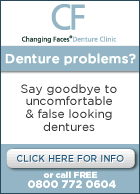What is your opinion on using botox to combat bruxism
Q. Hi, I have quite a bad bruxism problem and have done for about 10 years. I have a mouthguard (tanner appliance), but recently my grinding seems to have got worse – as soon as I have my appliance adjusted the next morning there are already deep grooves in it. My teeth are being visibly worn down on one side, are feeling fragile and are starting to move. I also feel that my gums are receeding. I also have facial pain, my jaw sounds like it’s crackling when I move it from side to side and my facial muscles are painful and sometimes swollen. I recently tried a muscle relaxant prescribed by my dentist but without success. I have heard about botox and wondered what your opinion was on its use to combat bruxism? Is it recommended generally and is it safe? Many thanks in advance.
A.
Thanks for your email. All the symptoms you describe of are suggestive of a strong bruxism habit that needs some urgent attention. I presume the muscle relaxant prescribed by your dentist was a benzodiazepine such as diazepam and taken orally. Botox briefly works as a muscle relaxant directly into the muscle.
Bruxism can be regarded as a disorder of repetitive, unconscious contraction of the masseter muscle (the large muscle on the outside of the jaw that moves it). In the treatment of bruxism, Botox works to weaken the muscle enough to reduce the effects of grinding and clenching, but not so much as to prevent proper use of the muscle. The procedure involves about five or six simple, relatively painless injections into the masseter muscle. It takes a few minutes per side and the patient starts feeling the effects the next day. Occasionally, some bruising can occur, but this is quite rare. Injections must be repeated more than once per year as the effects are only temporary.
The most reliable way to diagnose bruxism is through EMG (electromyographic) measurements. In cases of TMJ dysfunction, a complete diagnosis is made with the benefit of muscle scans, joint sonography, computerised jaws scans and MRI. If applicable the neuromuscular treatments are used to treat this distressing condition.
The three steps involve:
1 Muscle relaxation – this is carried out via a process called Tens, which carries a low frequency, rhythmic pulse to the overworked muscles. This relaxes the muscle and jaw system.
2 Stabilisation – once the relaxed postion is found, a plastic orthodontic is worn to maintain the relaxed muscles and to ensure that the original, painful symptoms have disappeared.
3 Solution – the long term solution can involve meticulous adjustments of tooth shape, to allow the jaw to function in its muscularly- relaxed position, Orthodontic or porcelain restorations which can secure a healthy, great-looking smile as an added benefit.











Leave a Reply